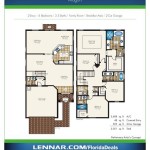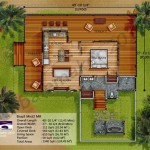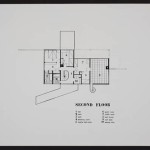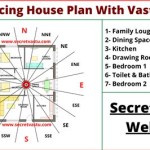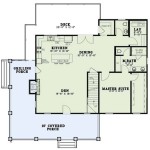4-Car Split Garage House Plans: Exploring Space, Functionality, and Design
The demand for homes with ample garage space has been steadily increasing, driven by factors such as multi-car households, the need for storage, and the desire for dedicated workshops or hobby areas. 4-car split garage house plans represent a significant architectural response to this demand, offering not only parking for multiple vehicles but also the potential for improved organization and enhanced curb appeal. These plans encompass a variety of layouts, architectural styles, and functional considerations that must be carefully evaluated to ensure the final build aligns with individual needs and aesthetic preferences.
A 4-car split garage, as opposed to a single, monolithic four-car garage, typically involves dividing the garage space into two or more distinct sections. This separation can occur in several ways, such as a 2-car garage on one side and two single-car garages on the other, or a combination of a single-car and a three-car configuration. Such arrangements offer several advantages, including improved aesthetics, greater flexibility in usage, and enhanced structural integrity of the house as a whole.
Navigating the world of 4-car split garage house plans requires a thorough understanding of the various design options, potential challenges, and key considerations that influence the overall success of the project. This includes evaluating lot size, architectural style compatibility, zoning regulations, and the specific needs of the homeowner. The following sections delve into these aspects in greater detail.
Key Point 1: Advantages of a Split Garage Design
Opting for a split garage design over a single, larger garage offers several compelling benefits. These advantages extend beyond simple vehicle storage and can significantly impact the functionality, aesthetics, and value of the home.
One of the primary advantages is enhanced curb appeal. A large, uninterrupted garage door can often dominate the front facade of a house, creating an unappealing, boxy appearance. By splitting the garage into two or more sections, architects can integrate the garage more seamlessly into the overall design. This allows for the incorporation of windows, decorative elements, and varying rooflines, resulting in a more visually appealing and balanced exterior. The split can create visual breaks, resembling smaller, separate structures adding layers and interest to the front of your home.
Structural considerations also favor a split garage design. A very wide, single garage door requires a significantly larger header, which can impact the structural integrity of the wall above. Splitting the garage reduces the span of the headers, making it easier and more cost-effective to engineer a structurally sound opening. This can be particularly important in areas prone to seismic activity or high winds.
Furthermore, a split garage provides greater flexibility in the use of space. One section of the garage can be dedicated to vehicle storage, while another can be used as a workshop, home gym, or storage area for tools, lawn equipment, or recreational gear. This segregation allows for better organization and prevents clutter from spilling into the parking areas. It can even provide a sound buffer if one bay is used as a workshop while the others house vehicles.
Security is another factor to consider. Separating the garage into distinct sections can provide an added layer of security. If one garage door is compromised, the other sections remain secure, potentially deterring theft. This is especially beneficial if valuable items are stored within the garage.
Finally, in some zoning jurisdictions, there might be restrictions on the width of a single garage door facing the street. A split garage may be necessary to comply with these regulations and obtain building permits.
Key Point 2: Design Considerations and Planning
Successfully implementing a 4-car split garage house plan requires careful consideration of several design factors. These considerations encompass both the interior layout of the garage and its relationship to the rest of the house, as well as exterior aesthetics and site planning.
The first step is to determine the specific needs of the homeowner. How many vehicles will be stored in the garage? Will the garage be used for any other purposes, such as a workshop, storage area, or hobby space? What are the dimensions of the vehicles that will be stored in the garage? Answering these questions will help determine the optimal size and configuration of each garage bay.
Next, the architectural style of the house must be considered. The garage should complement the overall design of the house, rather than detract from it. The roofline, siding, and trim should match the existing house, creating a cohesive and visually appealing exterior. A modern home might feature sleek, minimalist garage doors, while a traditional home might incorporate carriage-style doors with decorative hardware.
The placement of the garage on the lot is also crucial. Ideally, the garage should be positioned to minimize its visual impact on the front facade of the house. This can be achieved by setting the garage back from the front of the house or by orienting it to face the side or rear of the property. The driveway should also be designed to provide ample space for parking and maneuvering vehicles.
Interior layout of the garage must also be thoroughly planned. Consider the placement of doors leading into the house, as well as the location of windows and storage areas. Adequate lighting is essential, both inside and outside the garage. Outlets should be strategically placed to accommodate power tools, appliances, and other equipment. Proper ventilation is also important to prevent the buildup of fumes and moisture.
Accessibility is a critical consideration, especially for homeowners with mobility issues. Ramps or gradual inclines should be used to provide easy access to the garage from the driveway and the house. Doorways should be wide enough to accommodate wheelchairs or walkers. Interior layouts should allow for easy maneuvering around vehicles and storage areas.
Finally, consider the potential for future expansion or modification. Can the garage be easily converted into a living space or workshop if needed? Are there any zoning restrictions that might limit future alterations? Planning for future needs can add flexibility and value to the home.
Key Point 3: Zoning Regulations and Building Codes
Before embarking on a 4-car split garage house plan project, it is essential to thoroughly research local zoning regulations and building codes. These regulations govern various aspects of construction, including lot coverage, setbacks, height restrictions, and parking requirements. Failure to comply with these regulations can result in delays, fines, or even the denial of building permits.
Zoning regulations often dictate the maximum size of a garage that can be built on a particular lot. These regulations may also specify the number of parking spaces that are required per dwelling unit. It is important to ensure that the proposed 4-car split garage complies with these requirements. Some jurisdictions may even limit the visual dominance of the garage based on street frontage, requiring modifications to the proposed design.
Setback requirements dictate the minimum distance that a building must be set back from property lines. These requirements vary depending on the zoning district and the type of building. The garage must be set back from the front, side, and rear property lines in accordance with local regulations. This is often a crucial factor when considering the overall footprint of the house and the placement of the garage.
Building codes govern the structural integrity, safety, and energy efficiency of buildings. These codes cover a wide range of topics, including foundations, framing, roofing, electrical wiring, plumbing, and HVAC systems. The 4-car split garage must be designed and constructed in accordance with the applicable building codes. This includes ensuring proper ventilation, adequate fire separation, and appropriate insulation levels.
Permitting processes are also a key consideration. Building permits are required for most construction projects, including the construction of a new garage. The permitting process typically involves submitting detailed plans and specifications to the local building department for review. The building department will ensure that the plans comply with all applicable zoning regulations and building codes. Once the plans are approved, a building permit will be issued, allowing construction to begin.
Furthermore, any changes to the existing grade of the property, such as excavation or filling, may require additional permits. It is important to consult with the local building department to determine what permits are required for the specific project.
Environmental regulations may also apply to the construction of a 4-car split garage. These regulations may address issues such as stormwater management, erosion control, and the protection of wetlands and other sensitive areas. It is important to implement best management practices to minimize the environmental impact of the construction project. This may involve installing erosion control measures, such as silt fences and hay bales, and implementing a stormwater management plan to prevent runoff from polluting nearby waterways.
Finally, it is recommended to hire a qualified architect, engineer, or contractor to assist with the design and construction of the 4-car split garage. These professionals have the knowledge and experience necessary to ensure that the project complies with all applicable regulations and is built to the highest standards.

Traditional Design With 4 Car Split Load Garage 89893ah Architectural Designs House Plans

Spacious 4 Car Garage House Plans That Wow Dfd

Spacious 4 Car Garage House Plans That Wow Dfd

Spacious 4 Car Garage House Plans That Wow Dfd

House Plan 4 Bedrooms 2 5 Bathrooms Garage 3268 Drummond Plans

One Level Coastal House Plan With Split Garage Layout 66390jmd Architectural Designs Plans

House Plan 4 Bedrooms 2 Bathrooms Garage 3234 Drummond Plans

Modern Hill Country House Plan With Split Bedrooms 430027ly Architectural Designs Plans

House Plan 96104 Ranch Style With 2164 Sq Ft 3 Bed 1 Bath

House Plan 3323 00559 European 8 566 Square Feet 5 Bedrooms 6 Bathrooms Plans Luxury


